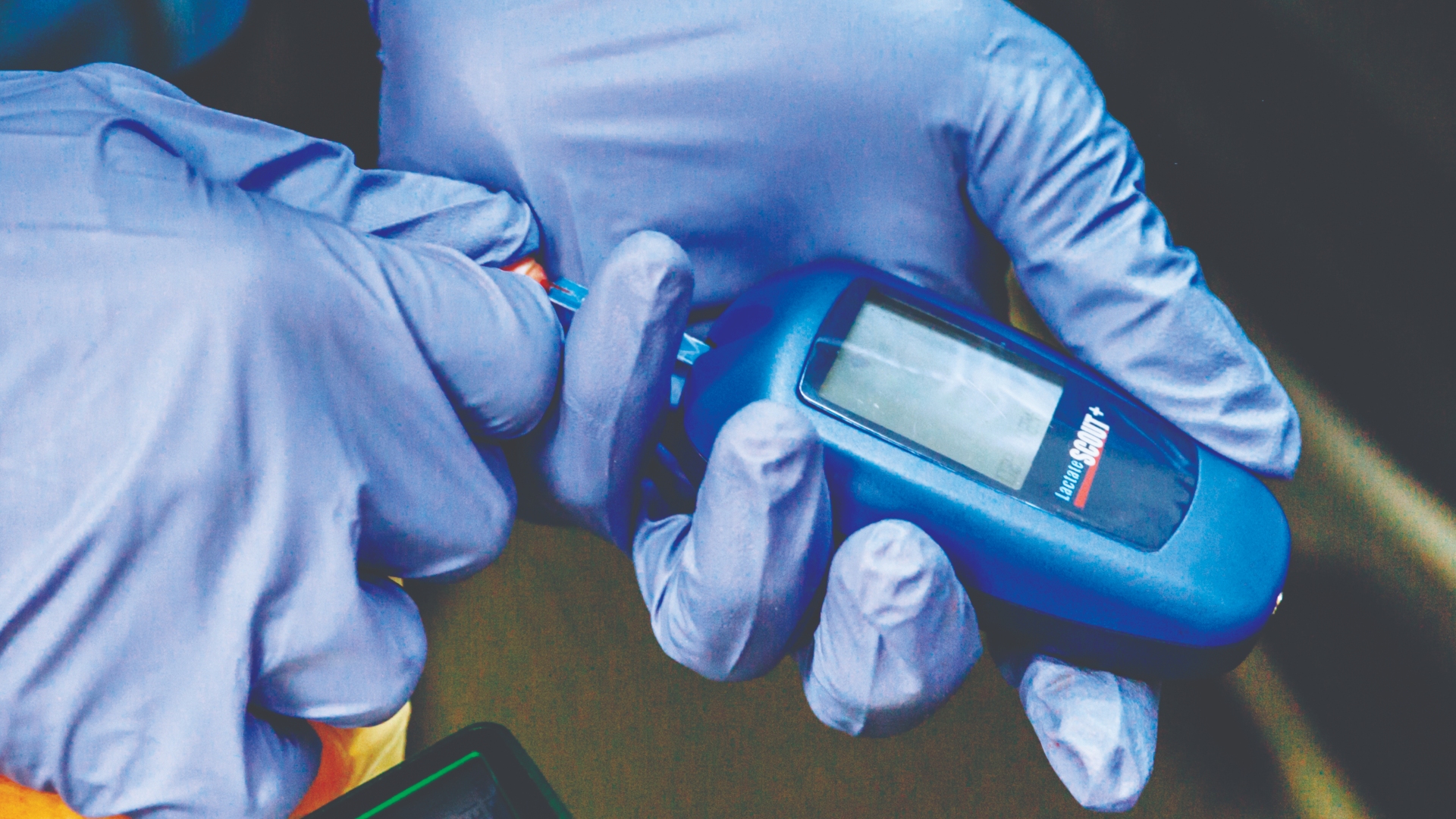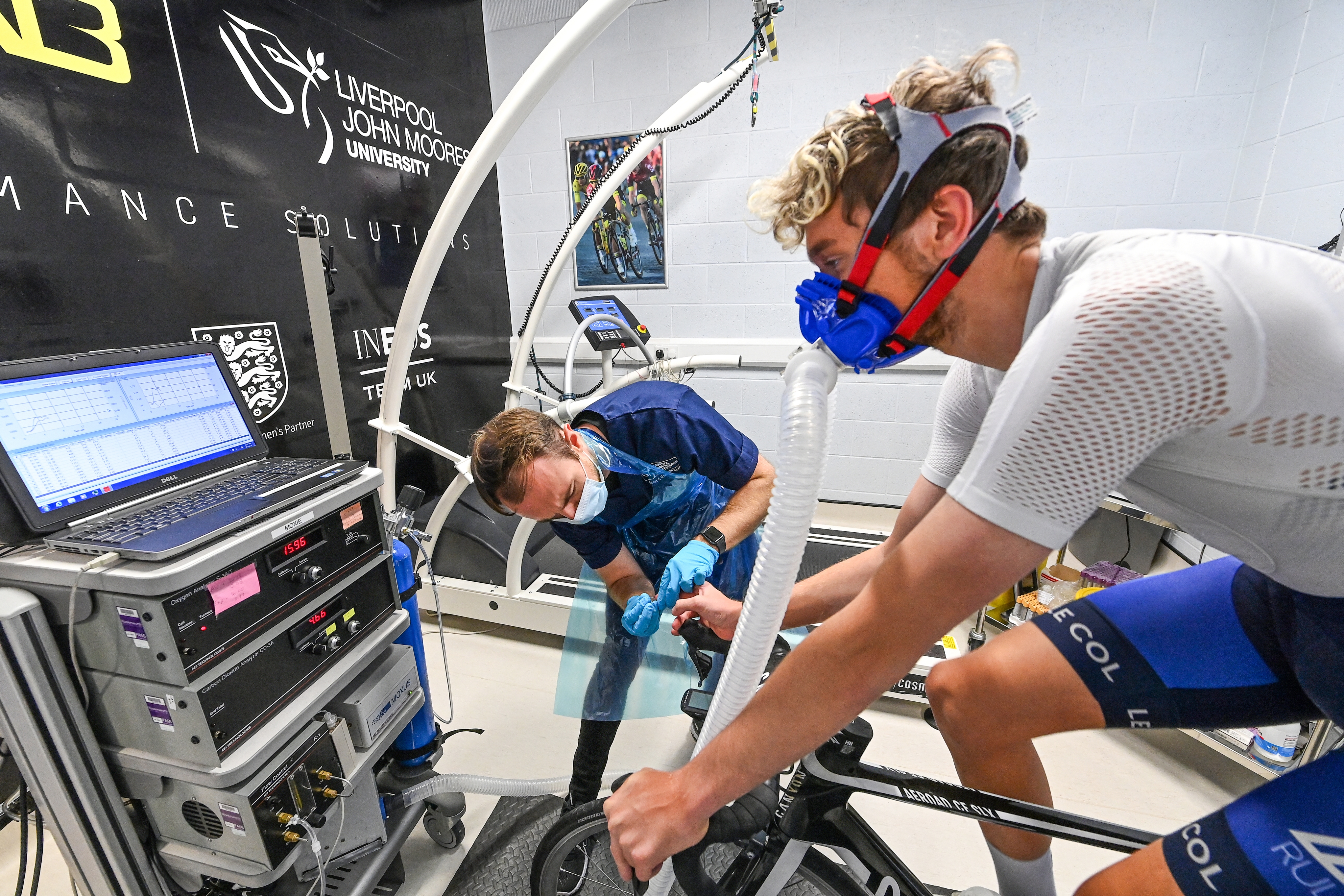
Lactate testing is standard practice among elite cyclists, and is lately attracting more interest from amateurs too. By measuring blood lactate levels during exercise, cyclists are able to pinpoint their lactate threshold – the point at which the build-up of lactate outpaces its removal, which closely correlates to fatigue. Knowing this threshold can help optimise training intensity, prevent overtraining and enhance endurance. The debate continues as to whether, for amateur riders, lactate testing offers significant benefits over conventional benchmarks such as heart rate and power.
What's in it for cyclists?
Lactate testing measures blood lactate concentration during exercise to identify two critical thresholds: LT1 and LT2. LT1 is the intensity at which lactate starts to accumulate, typically at 60-70% of maximum heart rate (HRmax), usually equating to blood lactate of around 2mmol/L, indicating the beginning of the shift from aerobic to anaerobic energy production. LT2 is where lactate accumulates rapidly, at around 85-90% of HRmax, equating to about 4mmol/L blood lactate, marking the limit of sustainable intensity.
“Based on regular lactate testing, cyclists use these thresholds to create structured training plans, pace themselves effectively, and monitor performance improvements by adjusting training intensity,” explains Andy Page. “Some wearable devices estimate these thresholds based on your training, but the accuracy varies wildly across the population.”
What does the research say?
Studies from the 1930s established the close relationship between exercise intensity and lactate levels in the blood. Since the 1980s, lactate has been measured by elite athletes. Among more recent studies, Faude’s 2009 paper ‘Lactate threshold concepts: how valid are they?’ examined various lactate threshold concepts and confirmed their effectiveness in predicting performance and guiding training intensities for endurance sports. The research highlighted that lactate thresholds are crucial for developing tailored training programmes and enhancing athletic performance, specifically for cyclists.

How to reap the benefits?
“Test frequency depends on the athlete’s requirements,” says Peter Joffe. “It’s up to amateur cyclists how serious they are and whether they have access to a lab. In my opinion, it’s worth a twice-a-year visit to a lab to do lactate threshold testing, together with VO2 max.” Affordable test devices are now available to consumers, but neither of our experts considered home testing an advisable option, given the technical nature of blood sampling and data interpretation. The chart below shows how training zones can be set according to lactate threshold (LT2), i.e. by plotting intensity ranges (power and/or heart rate) aligned to the percentages shown. Andy Page adds: “Typically, we recommend eight to 12 weeks between tests, especially if you are doing a targeted training block. For first-timers, a baseline measurement can put you on the right path. Some riders test weekly or more, but the evidence for this being necessary is weak.”
What are the limitations?
“Consult with your doctor if you are unsure or new to vigorous exercise,” says Page. “Cycling in Zone 5 is difficult so you should ensure you are in good health and are aware of any cardiovascular issues.” Lactate readings are influenced by factors like nutrition, time of day, fatigue, stress, and caffeine intake. Blood lactate measures may not perfectly reflect muscle metabolism due to factors like blood volume and lactate transport efficiency. While there are better, costlier, tests such as muscle oxygen saturation, lactate testing remains a useful and good-value option.

Expert comment: Andy Page
Using wattage and heart rate data for each training zone tailors workout intensity precisely, optimising VO2 max and sweetspot training. Regularly updating zones through lactate testing aligns training with fitness levels, enhancing performance and avoiding overtraining. Power output at the two thresholds is a really accurate measure of cycling fitness and should be a key priority to train and pace effectively for everything from long rides to short races. The speed at thresholds is also sensitive to training, so a training block targeted at one intensity can see a shift in the zones. For example, more training in upper Zone 4 (threshold/sweet spot) can lead to higher power outputs on longer climbs without overreaching.
Conclusion
Lactate testing, a well established benchmark among elite cyclists, is gaining popularity among amateurs for its potential to optimise training and enhance performance. By identifying the critical thresholds, LT1 and LT2, cyclists can tailor their training intensity, improve endurance and avoid overtraining. Although the accuracy of consumer devices varies, regular testing offers valuable insights. While some debate its necessity for amateurs, lactate testing pays off for those who use it appropriately and accurately.







